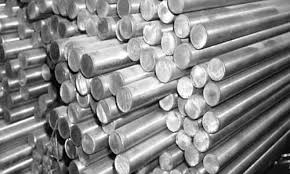In the world of metallurgy, choosing the right alloy for your specific application is crucial. One alloy that often takes center stage in discussions is 316 stainless steel round bar. But how does it stack up against other alloys? In this in-depth analysis, we will explore the properties, advantages, and disadvantages of 316 stainless steel when compared to various other alloys.
Understanding Stainless Steel Alloys
Before we dive into the comparison, let’s establish a foundation by understanding what stainless steel alloys are and why they are so widely used.
What Are Stainless Steel Alloys?
Stainless steel alloys are a family of iron-based alloys with a minimum of 10.5% chromium content. This unique composition gives them remarkable corrosion resistance and durability, making them suitable for a wide range of applications.
Types of Stainless Steel Alloys
Stainless steel alloys are categorized into several types based on their microstructure and composition. These types include austenitic, ferritic, martensitic, duplex, and precipitation-hardening. 316 stainless steel falls into the austenitic category.
Exploring 316 Stainless Steel
To appreciate how 316 stainless steel compares to other alloys, it’s essential to understand its characteristics and properties.
Composition of 316 Stainless Steel
316 stainless steel is primarily composed of:
- Chromium (Cr): Provides corrosion resistance.
- Nickel (Ni): Enhances resistance to acids and high temperatures.
- Molybdenum (Mo): Increases corrosion resistance, particularly in chloride environments.
Now, let’s delve into the comparison.
Comparative Analysis of 316 Stainless Steel with Other Alloys
1. 316 Stainless Steel vs. 304 Stainless Steel
Chemical Composition Comparison
- 316 Stainless Steel: Contains molybdenum, offering superior corrosion resistance, especially in coastal and chloride-rich environments.
- 304 Stainless Steel: Lacks molybdenum and is more susceptible to chloride-induced corrosion.
Common Applications
- 316 Stainless Steel: Widely used in marine environments, chemical processing, and medical devices.
- 304 Stainless Steel: Commonly used in kitchen appliances, architectural elements, and industrial equipment.
2. 316 Stainless Steel vs. 316L Stainless Steel
Carbon Content Comparison
- 316 Stainless Steel: Contains standard carbon content.
- 316L Stainless Steel: Has lower carbon content, reducing the risk of sensitization and improving weldability.
Usage Distinction
- 316 Stainless Steel: Ideal for applications requiring strength and corrosion resistance.
- 316L Stainless Steel: Preferred for applications involving welding and where sensitization is a concern.
3. 316 Stainless Steel vs. 317 Stainless Steel
Molybdenum Content Comparison
- 316 Stainless Steel: Contains 2-3% molybdenum.
- 317 Stainless Steel: Has higher molybdenum content (3-4%), offering increased resistance to pitting corrosion.
Applications
- 316 Stainless Steel: Suitable for general-purpose corrosion resistance.
- 317 Stainless Steel: Commonly used in chemical and petrochemical industries due to its enhanced corrosion resistance.
4. 316 Stainless Steel vs. 316Ti Stainless Steel
Titanium Addition
- 316 Stainless Steel: Standard composition.
- 316Ti Stainless Steel: Contains added titanium, which stabilizes the structure and prevents sensitization.
High-Temperature Performance
- 316 Stainless Steel: Good for high-temperature applications but may become sensitized at prolonged elevated temperatures.
- 316Ti Stainless Steel: Designed for high-temperature environments without sensitization concerns.
5. 316 Stainless Steel vs. Duplex Stainless Steels
Microstructure Comparison
- 316 Stainless Steel: Austenitic microstructure.
- Duplex Stainless Steels: Combination of austenitic and ferritic microstructures, offering a unique balance of properties.
Applications
- 316 Stainless Steel: Versatile, suitable for various applications.
- Duplex Stainless Steels: Used in environments where both corrosion resistance and strength are critical, such as offshore oil platforms.
FAQ
Q1. Is 316 stainless steel the best choice for all applications?
No, while 316 stainless steel is versatile and offers excellent corrosion resistance, the choice of alloy should consider specific application requirements. Factors like temperature, environment, and mechanical stress play a significant role in selecting the appropriate alloy.
Q2. Are there any alloys that outperform 316 stainless steel in corrosion resistance?
Yes, some alloys, such as Hastelloy and Inconel, provide superior corrosion resistance in highly aggressive environments. However, they are often more expensive and may have limitations in other properties.
Q3. What is sensitization, and why is it a concern in stainless steel?
Sensitization refers to the formation of chromium carbides at grain boundaries in stainless steel, reducing its corrosion resistance. It can occur at elevated temperatures, particularly in alloys with higher carbon content, like 316 stainless steel.
Q4. Can 316 stainless steel be used in applications involving food contact?
Yes, 316 stainless steel is considered food-safe and is commonly used in food processing equipment, kitchen appliances, and utensils due to its corrosion resistance and non-reactive nature.
Conclusion
In the realm of stainless steel alloys, 316 stainless steel round bars shine as a corrosion-resistant, versatile option. However, the choice of alloy depends on the specific requirements of your application. Understanding the properties and comparisons provided in this article will empower you to make informed decisions when selecting the right alloy for your project. Whether it’s 316 stainless steel or another alloy, each has its strengths and limitations that can be harnessed to meet your unique needs.


